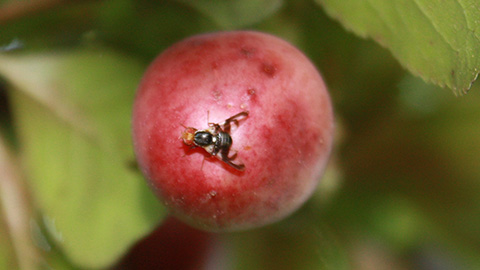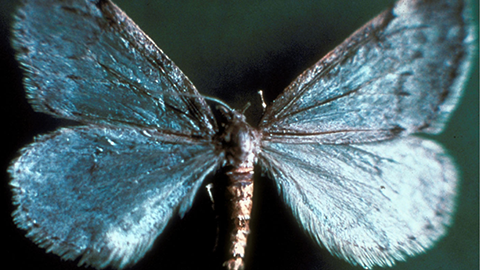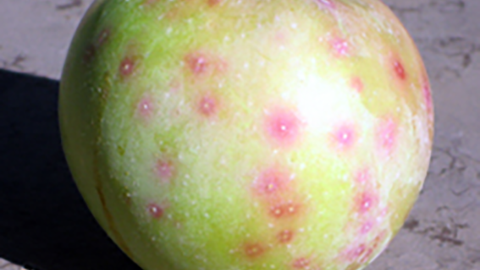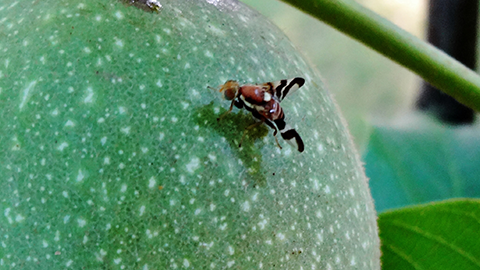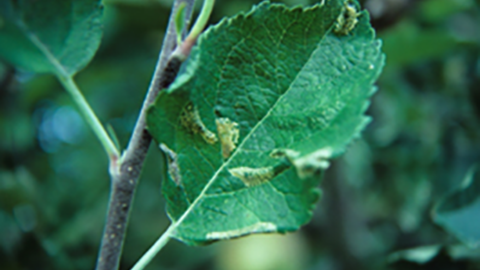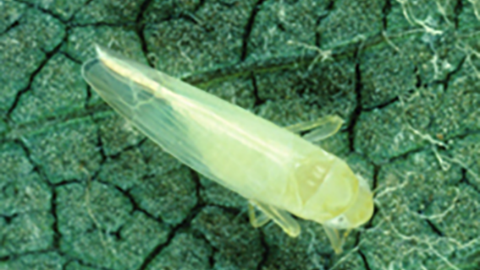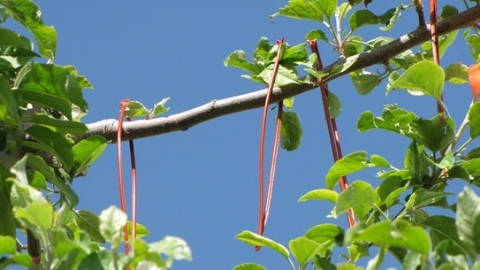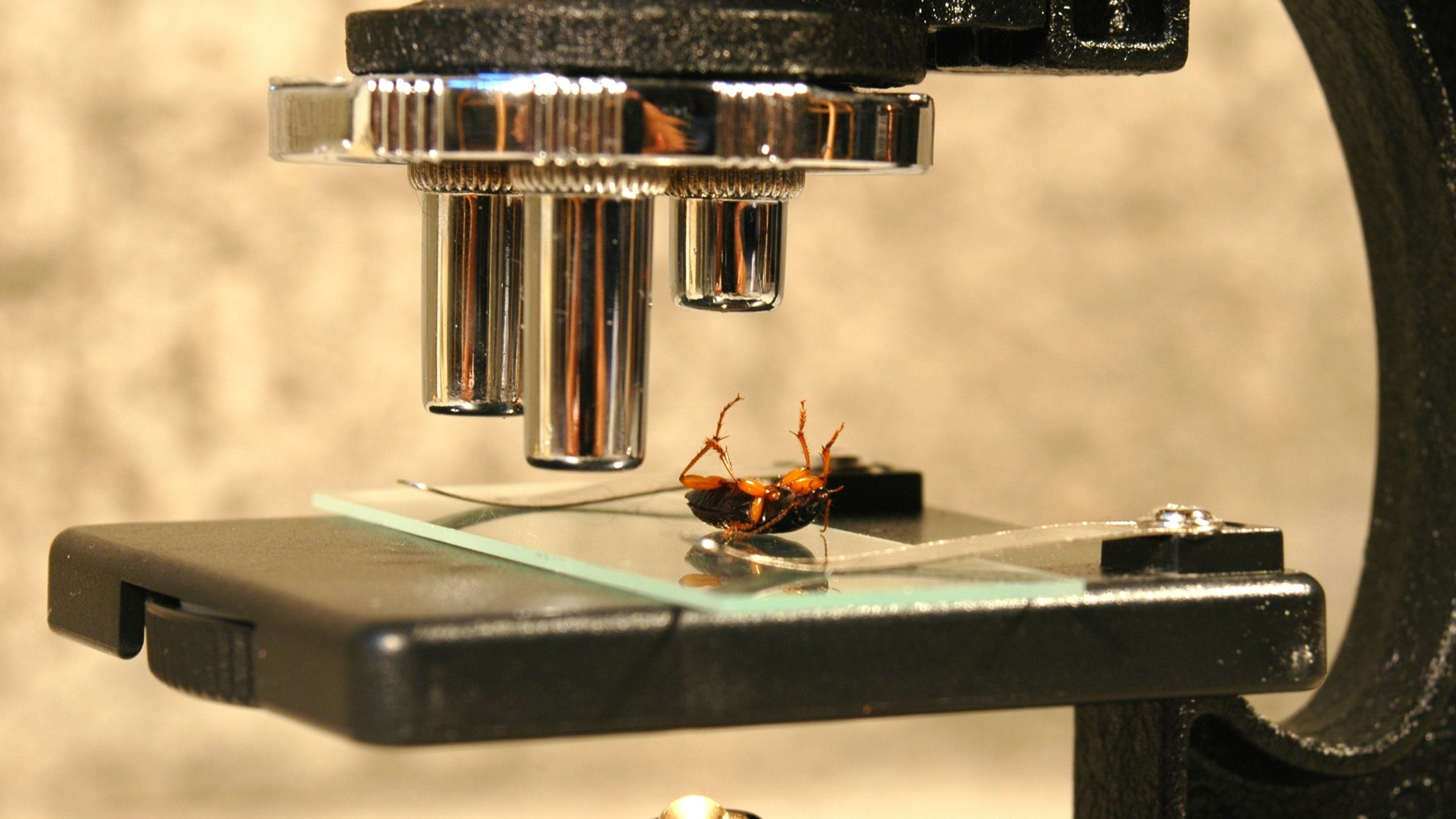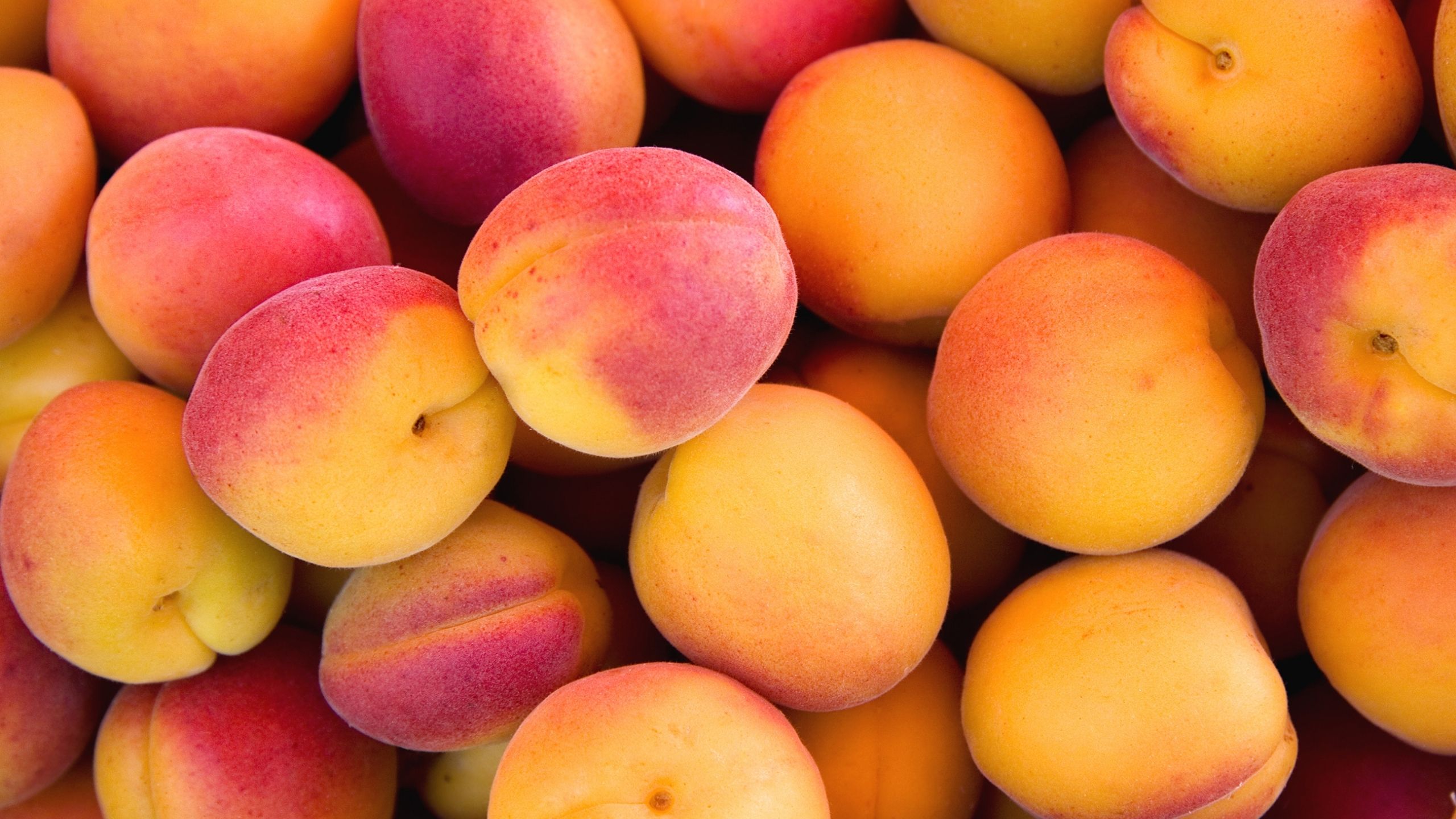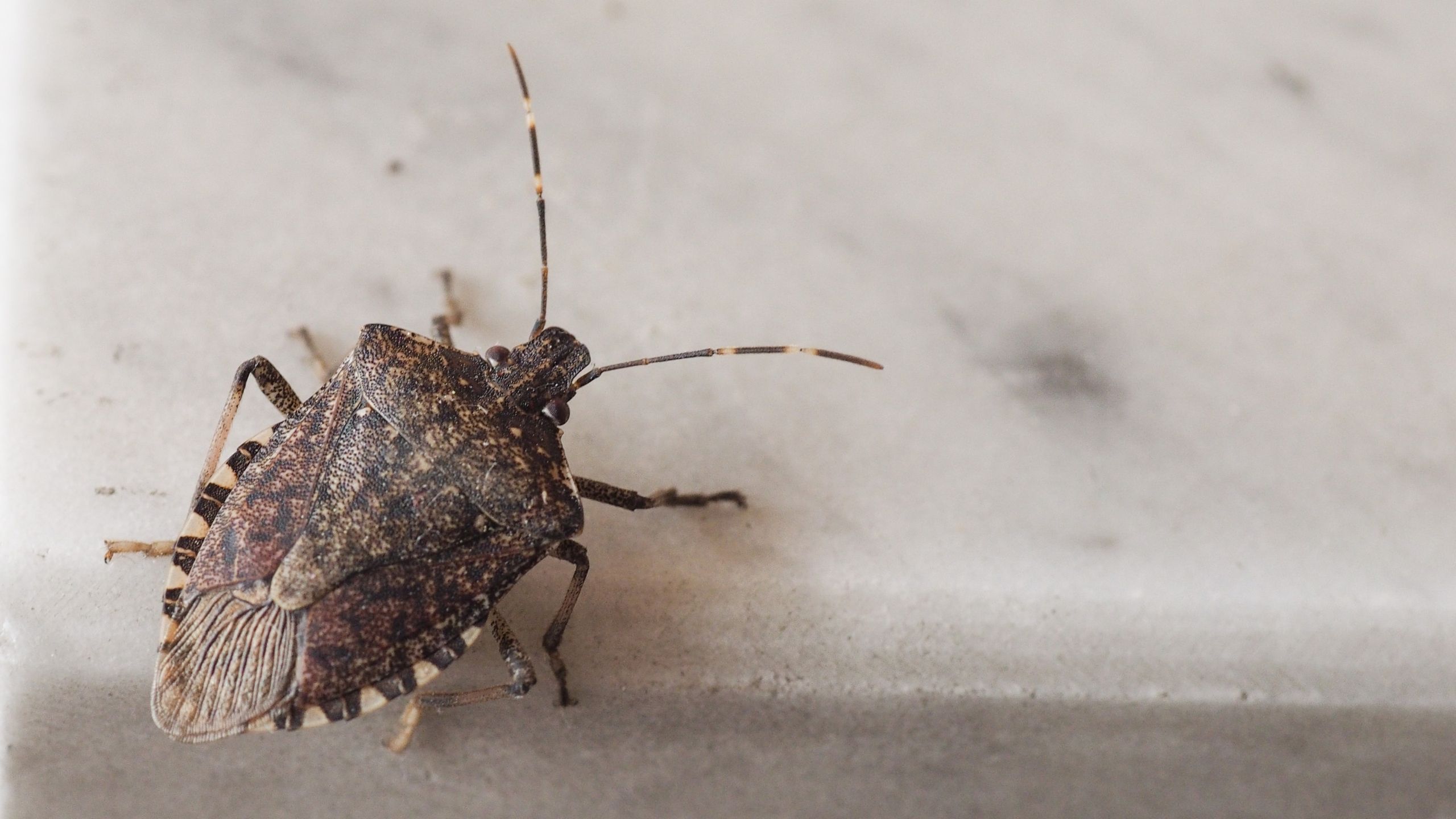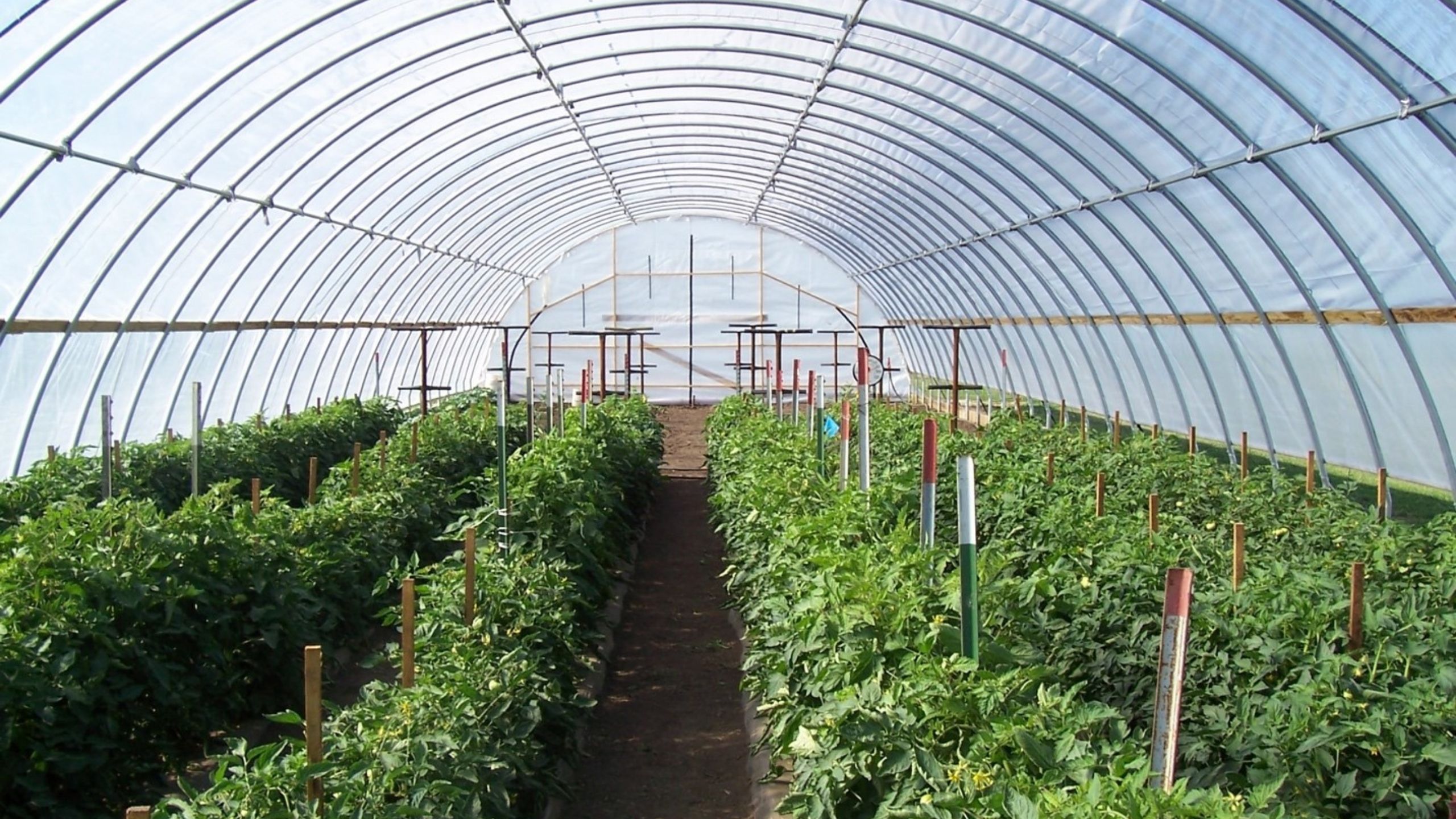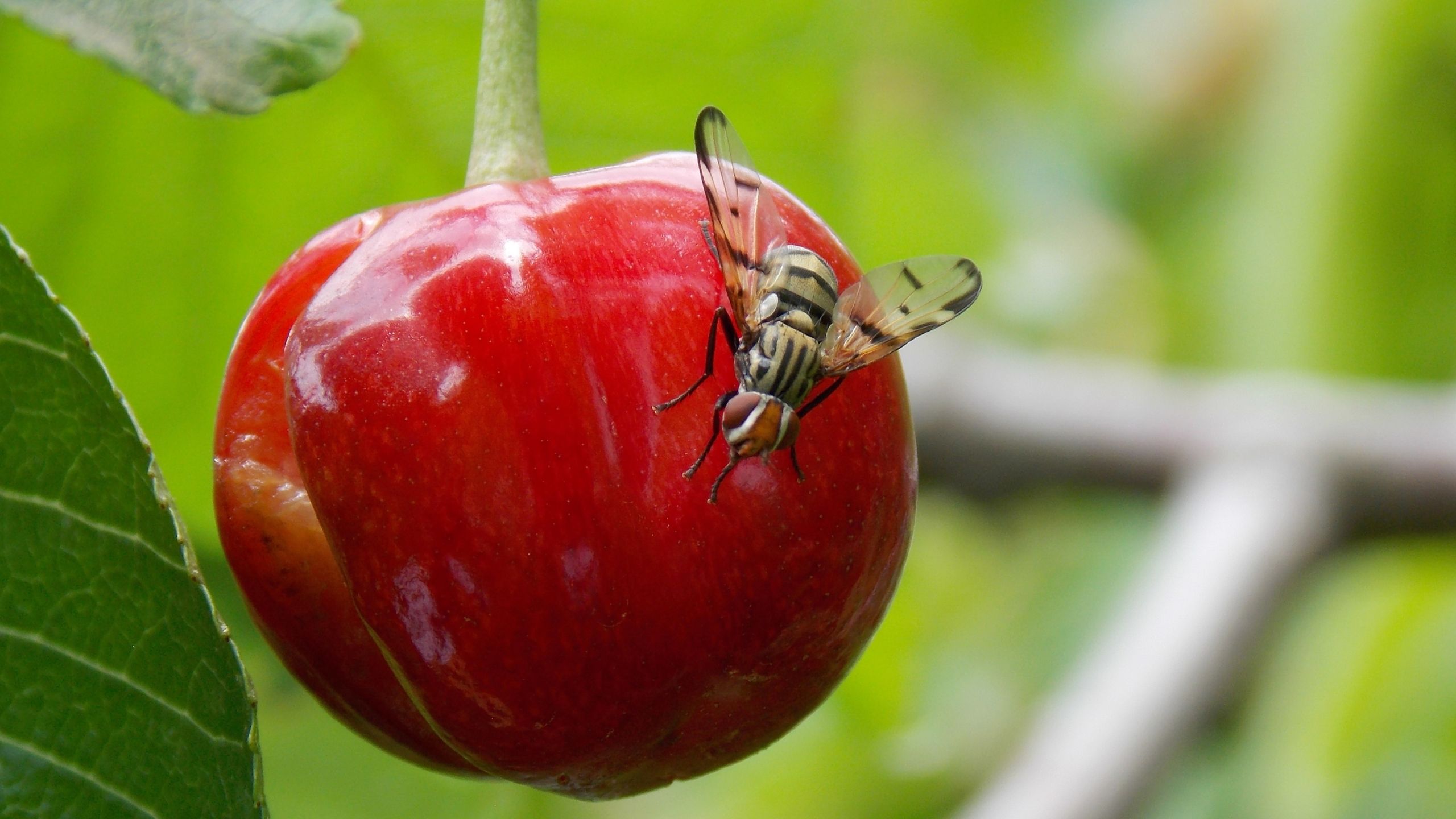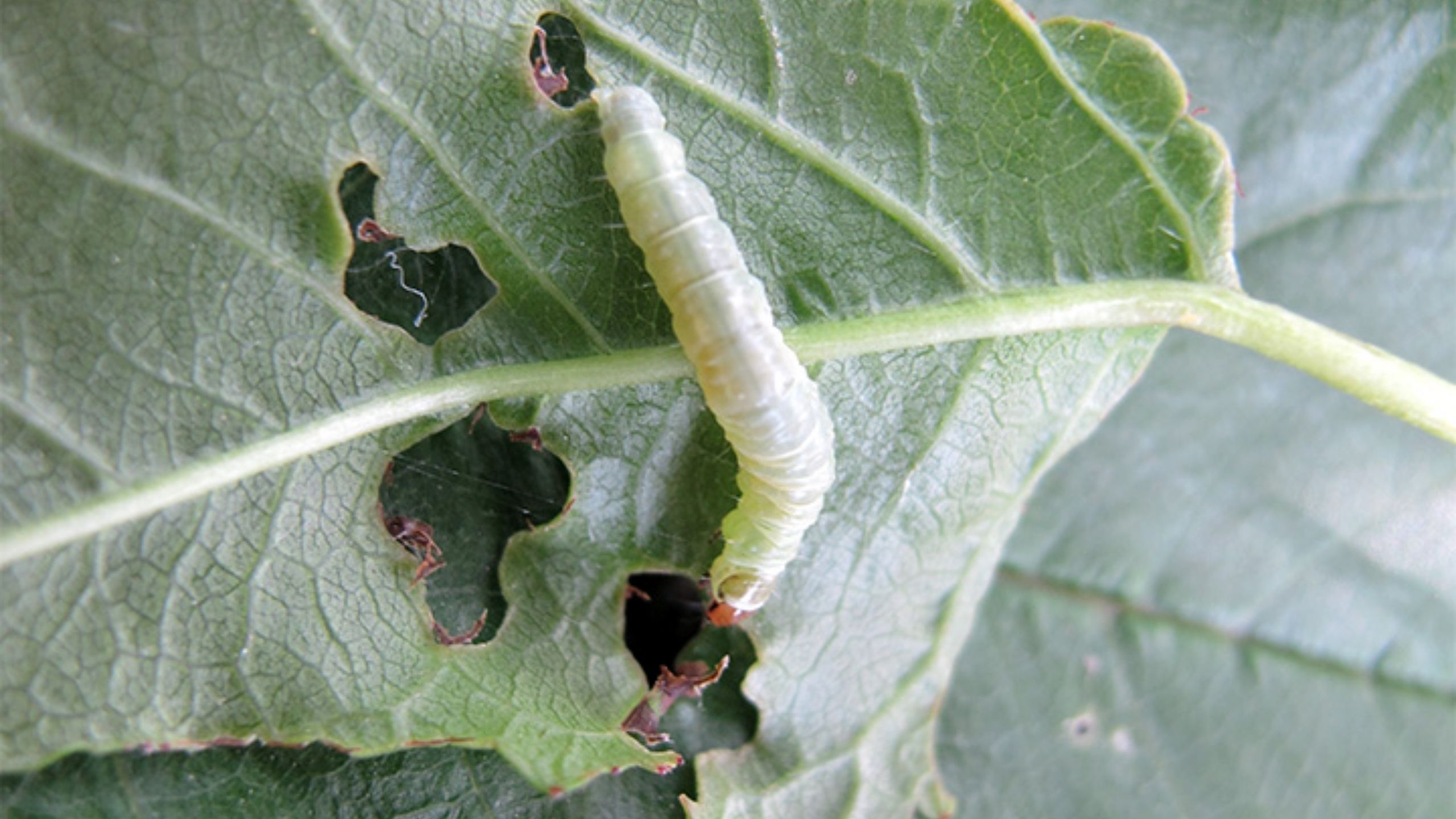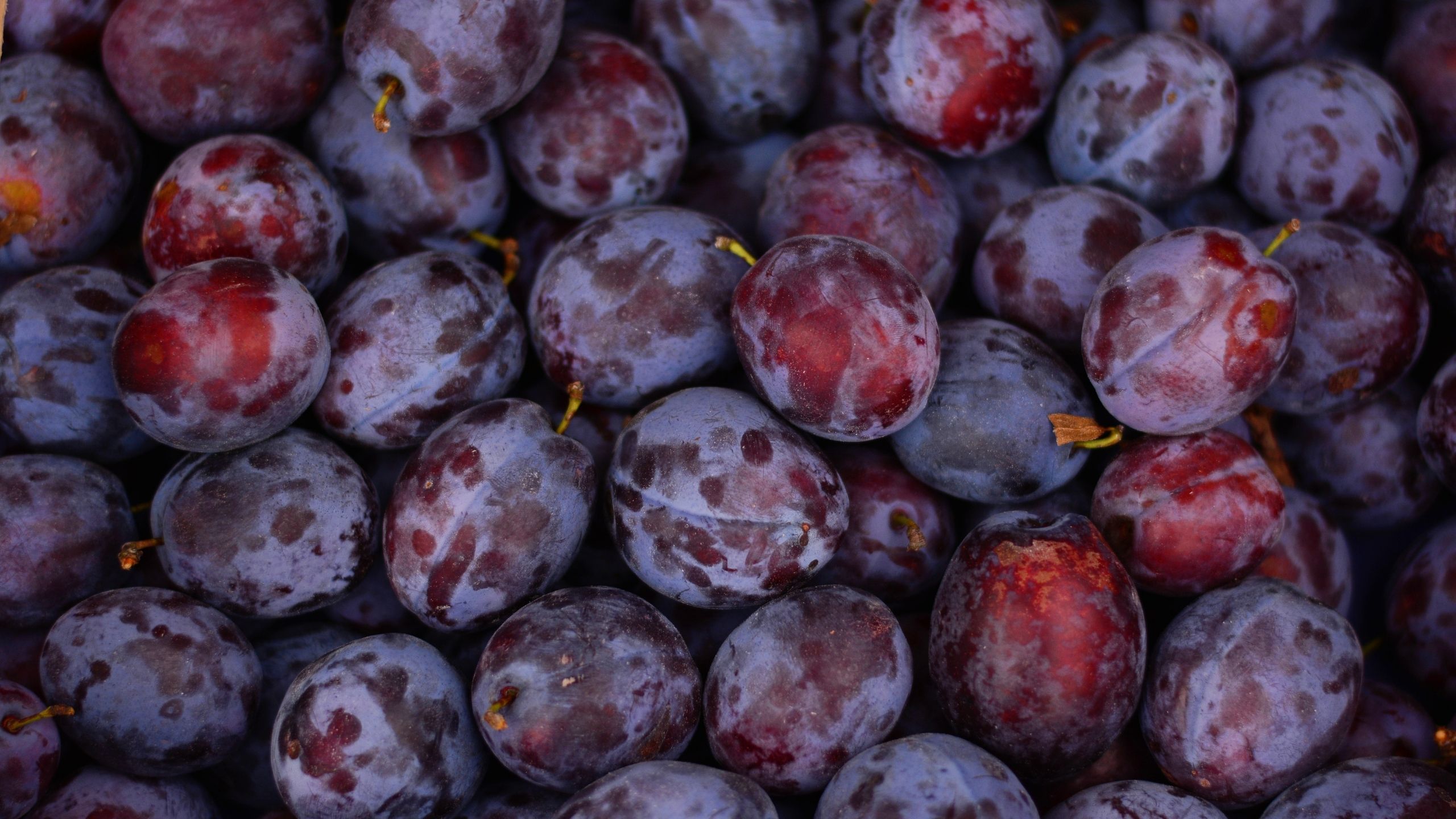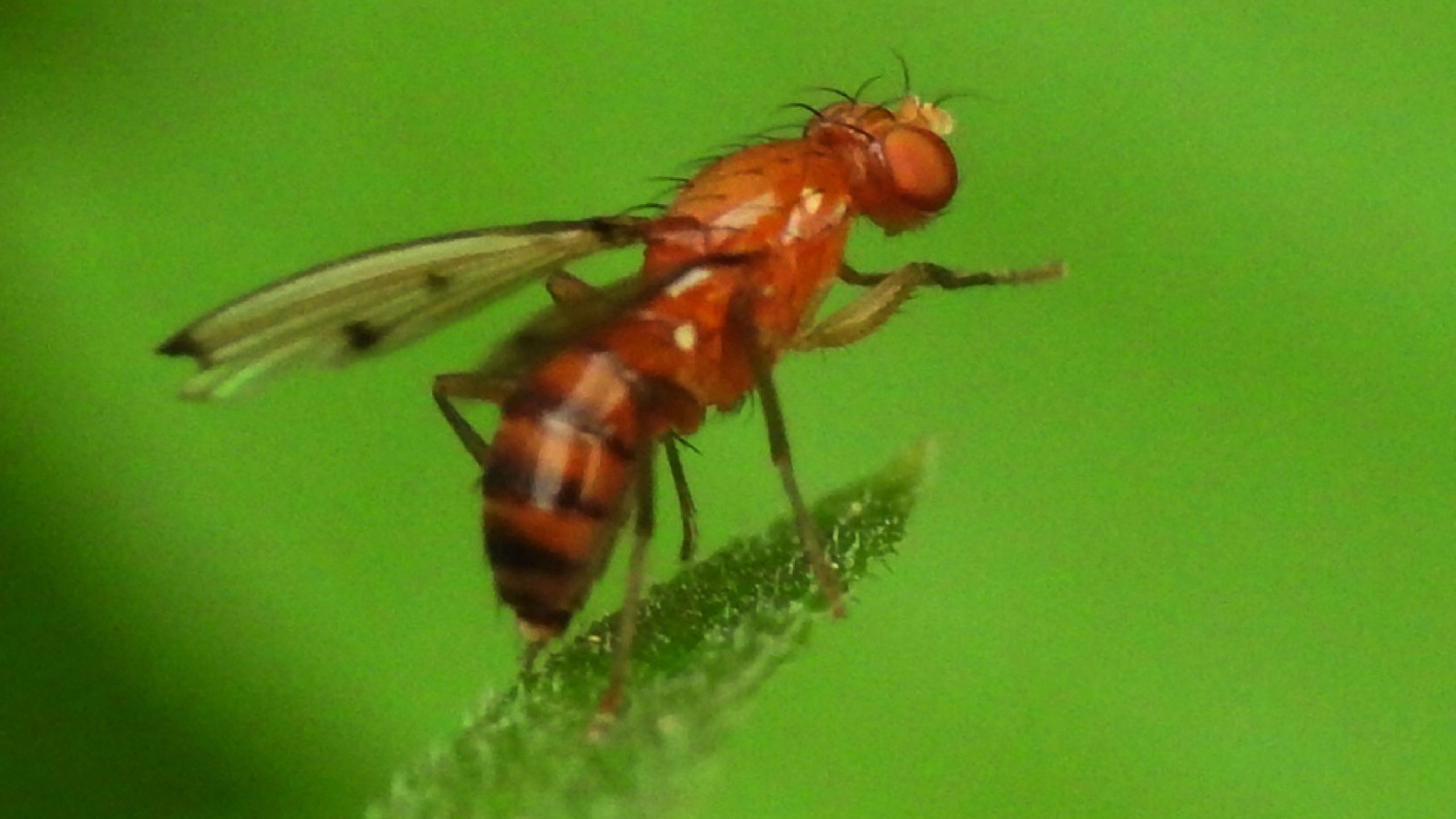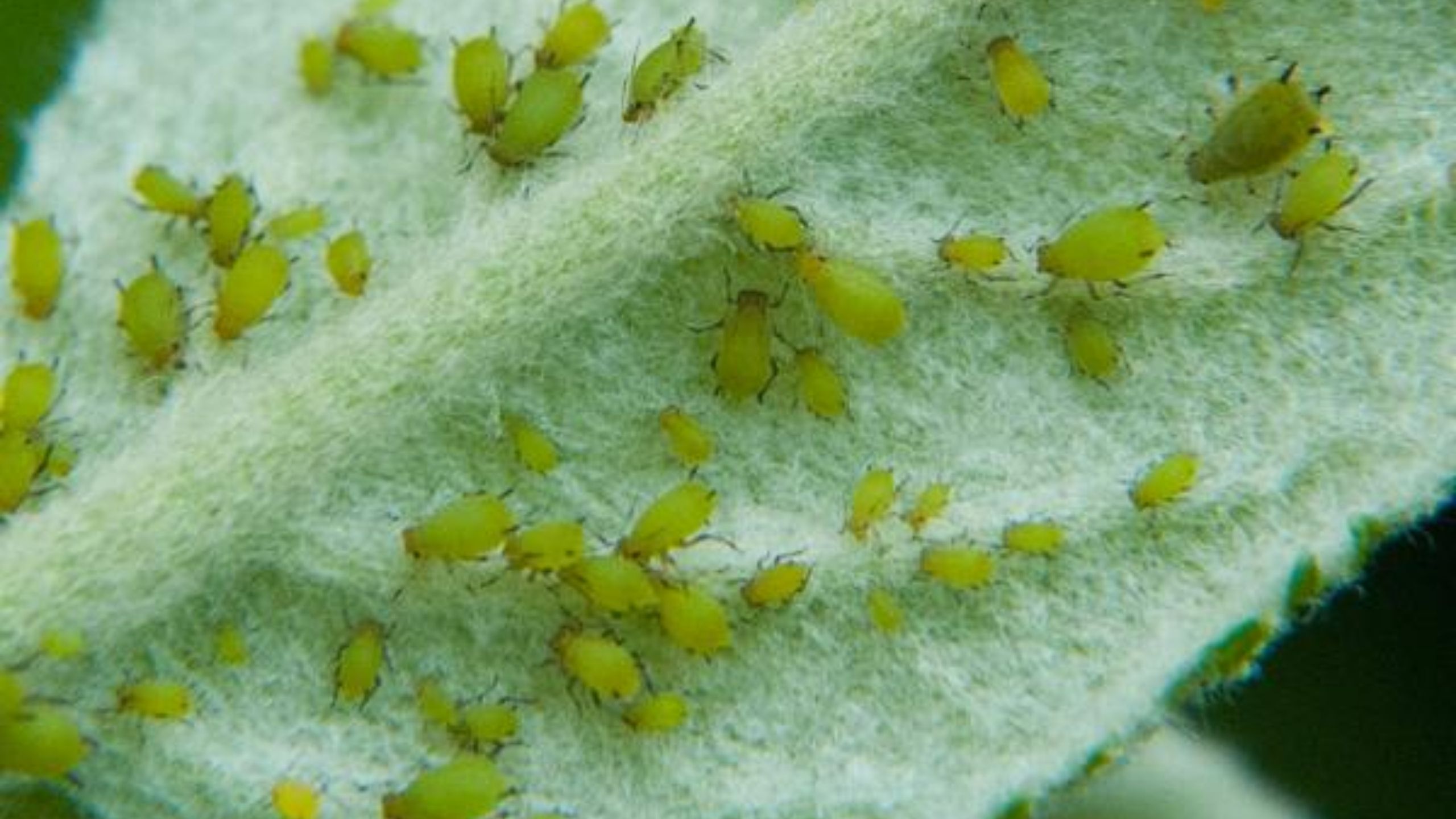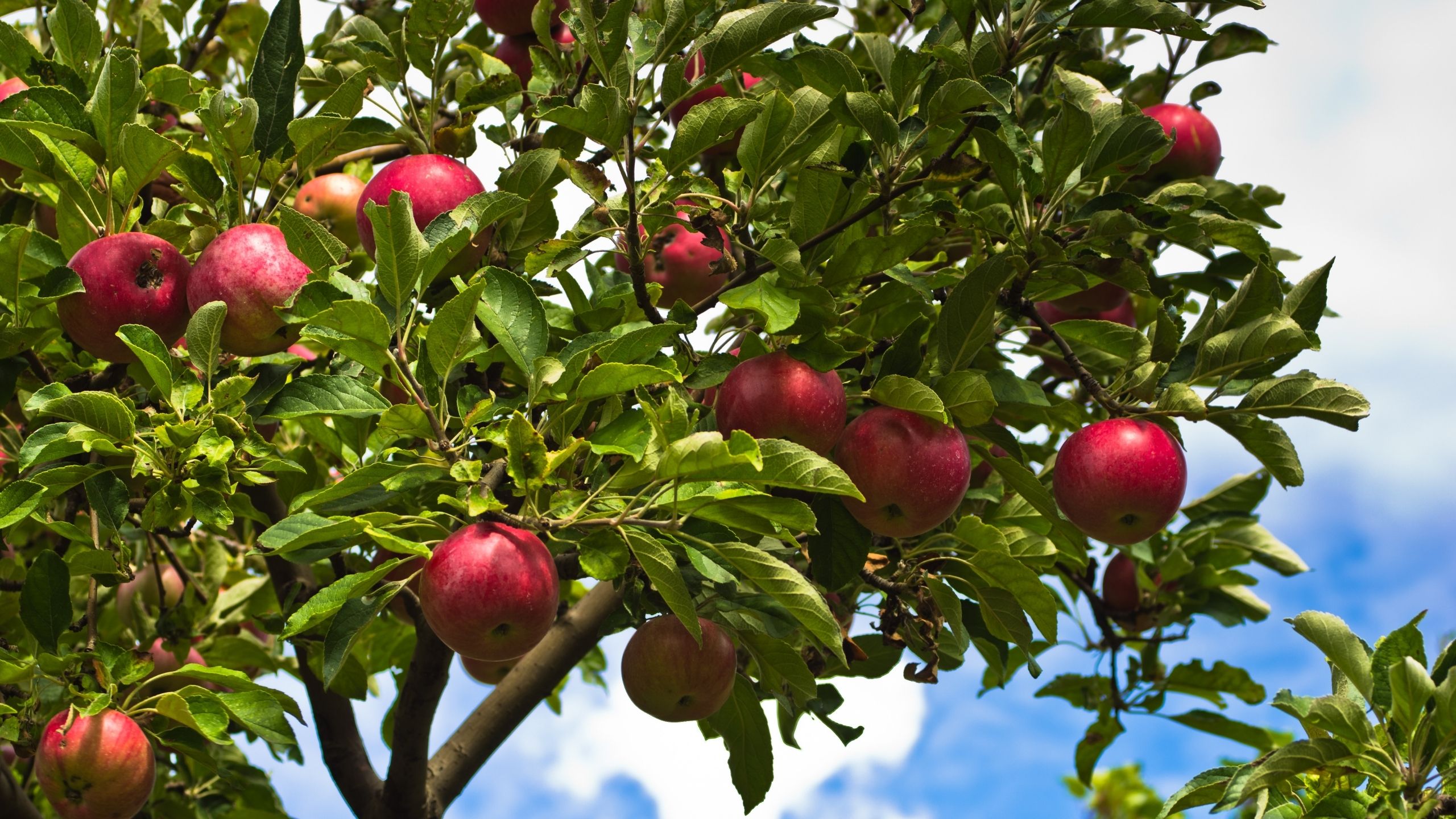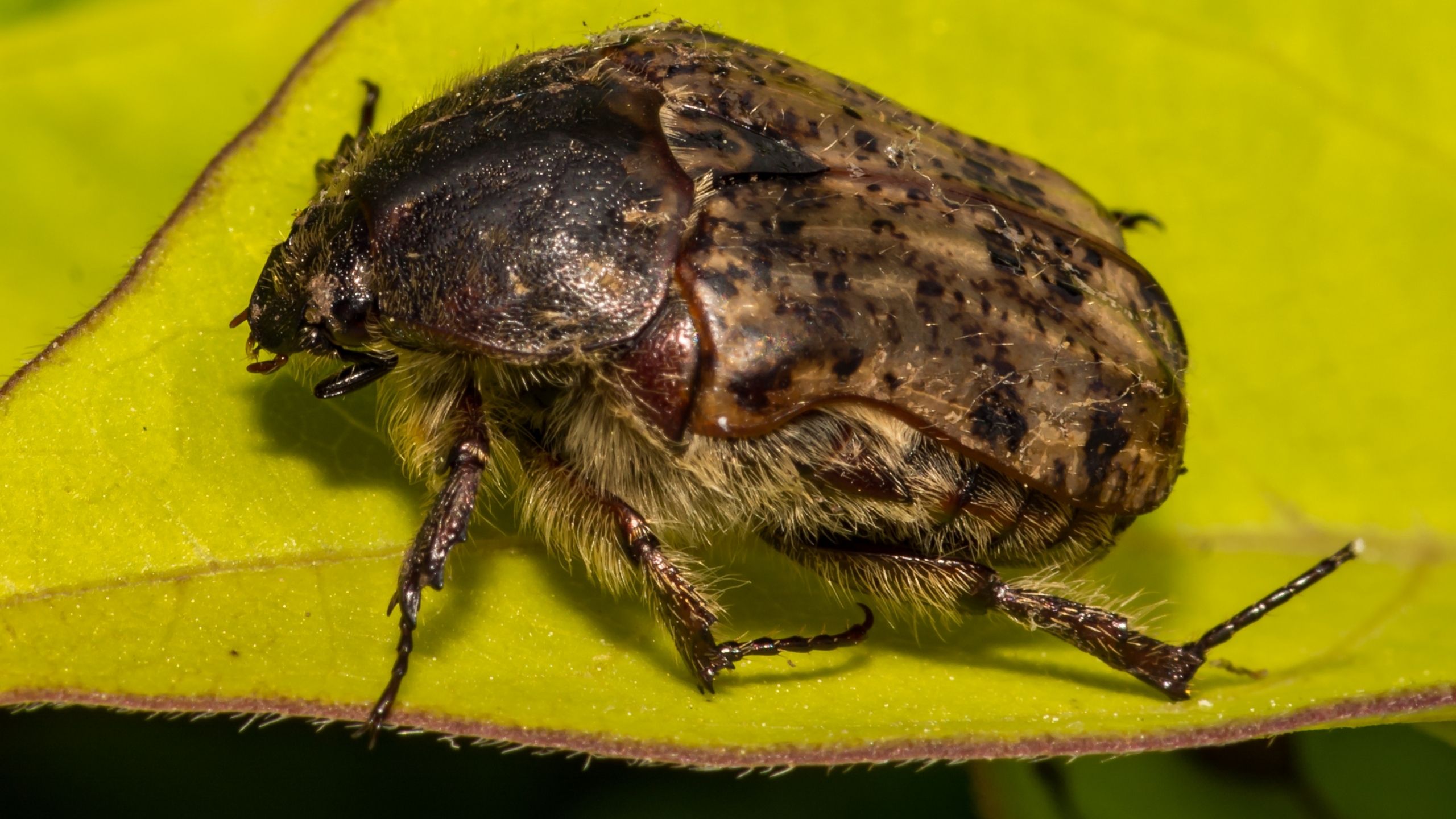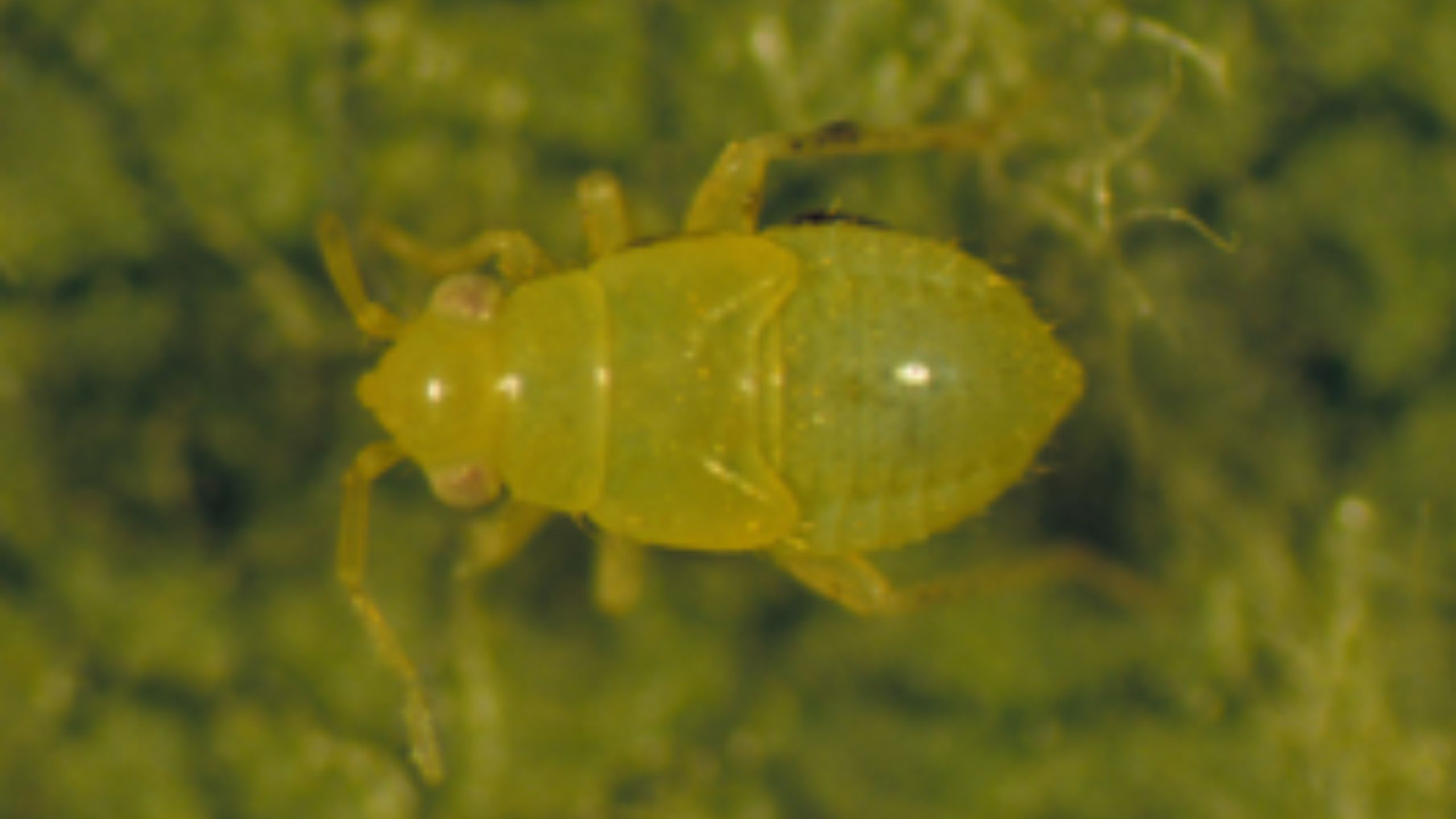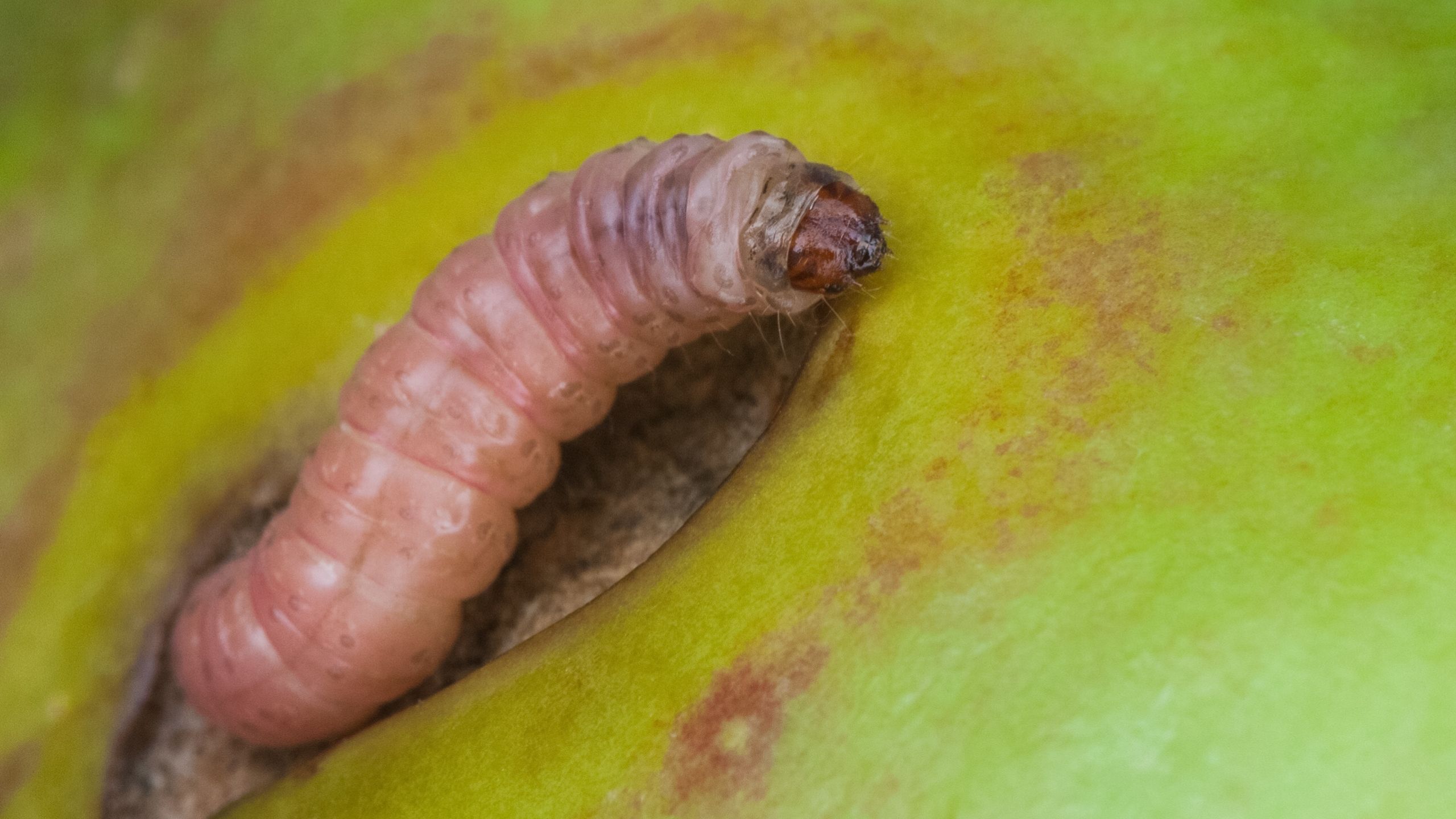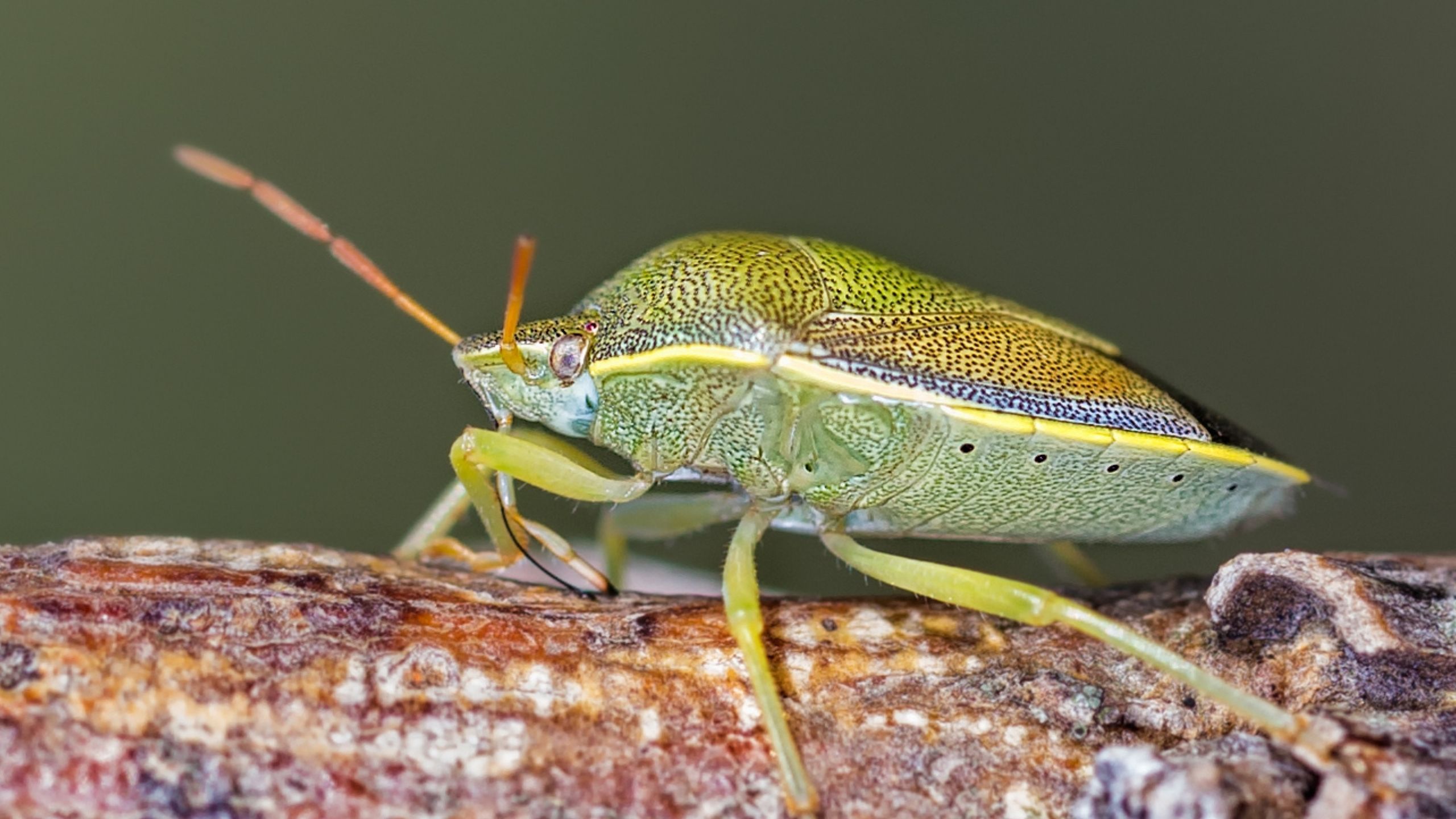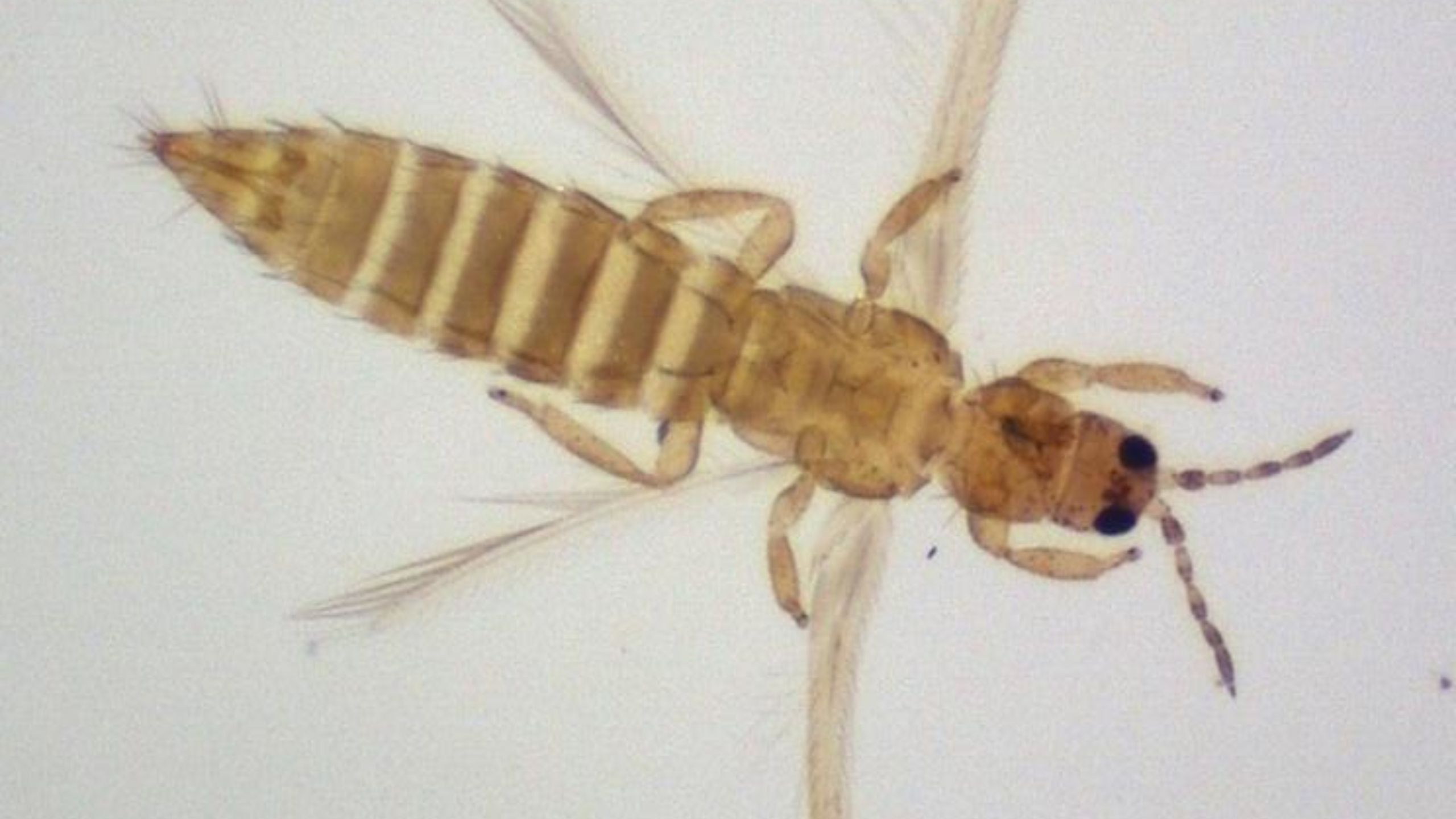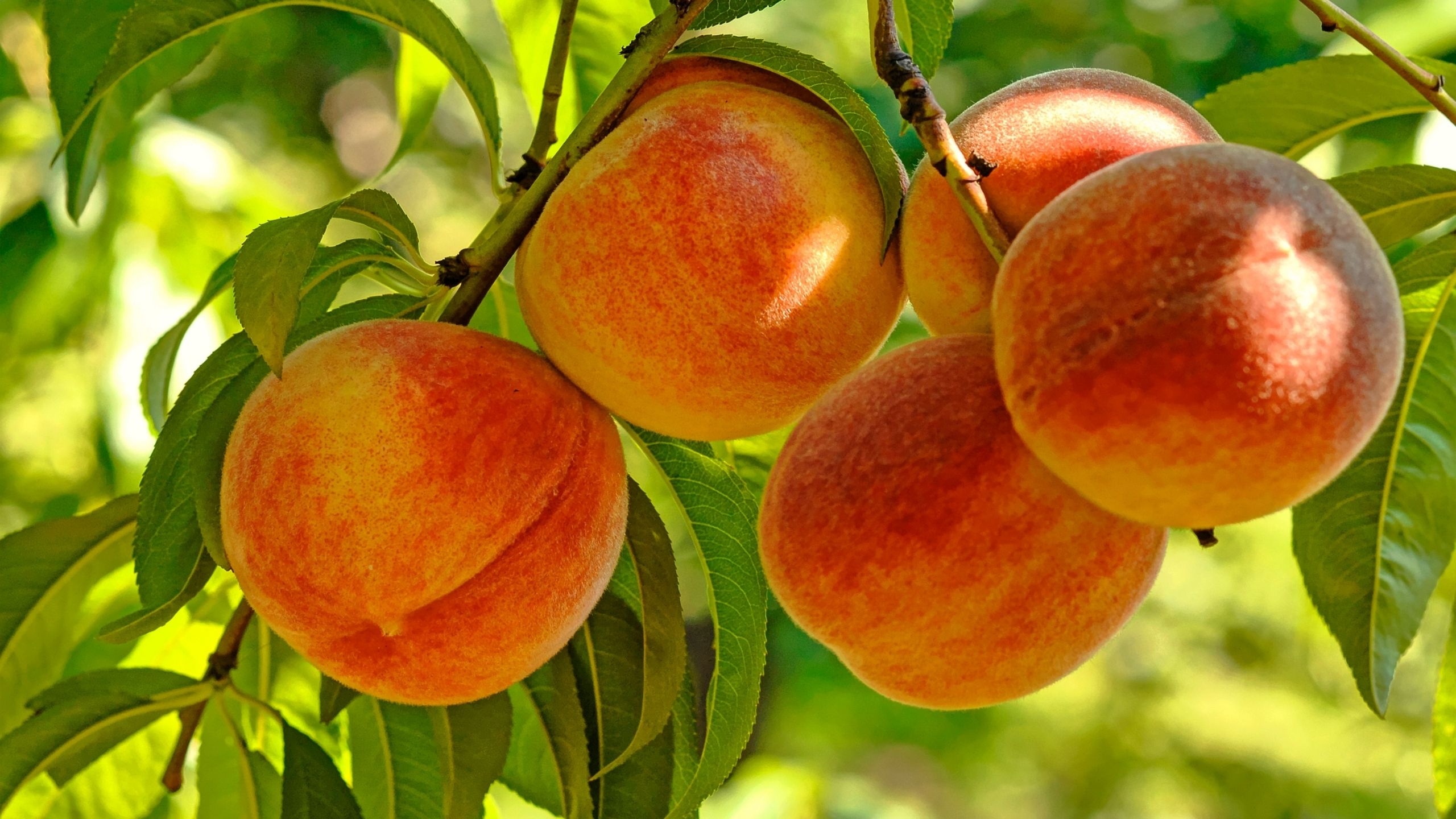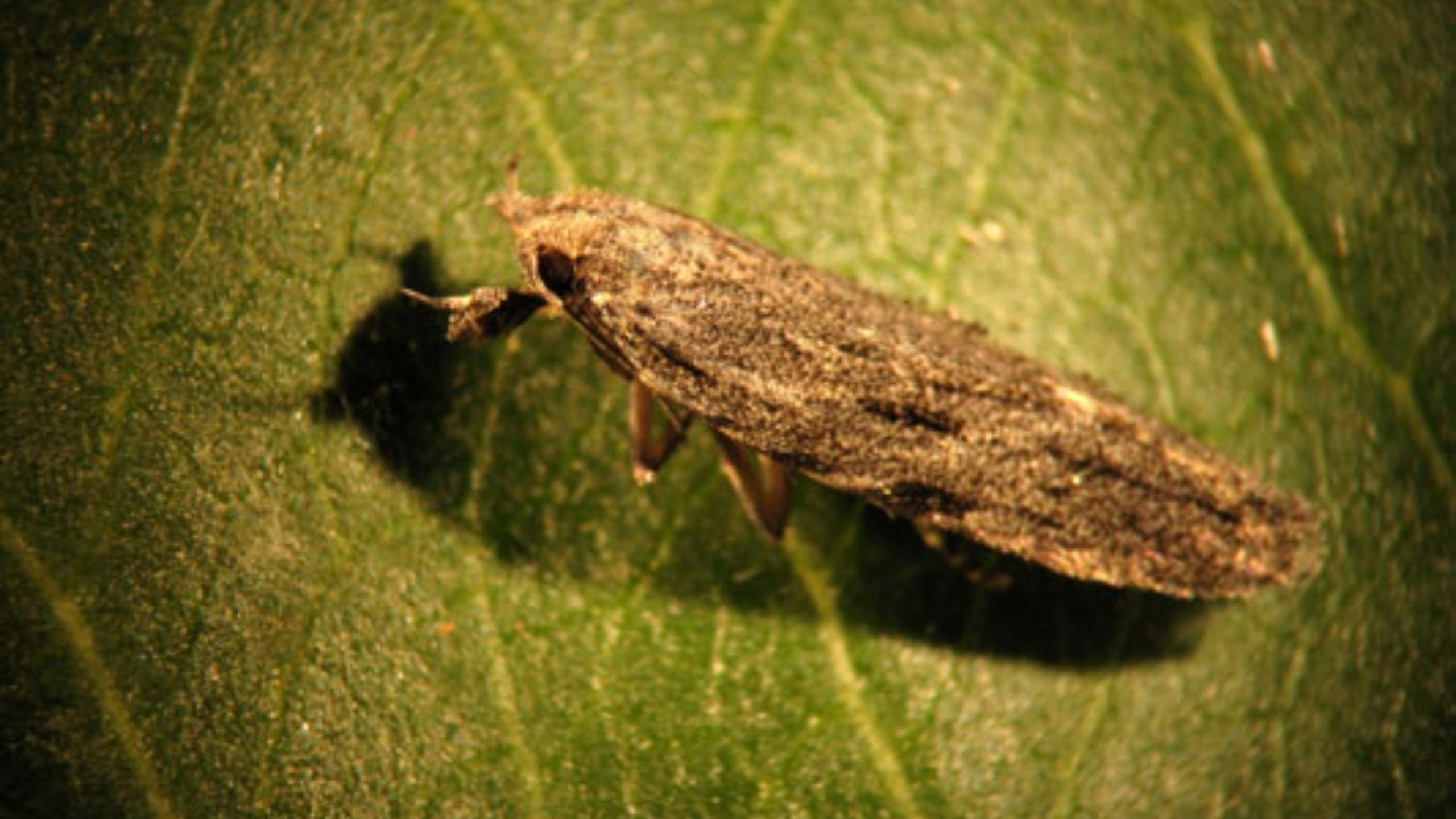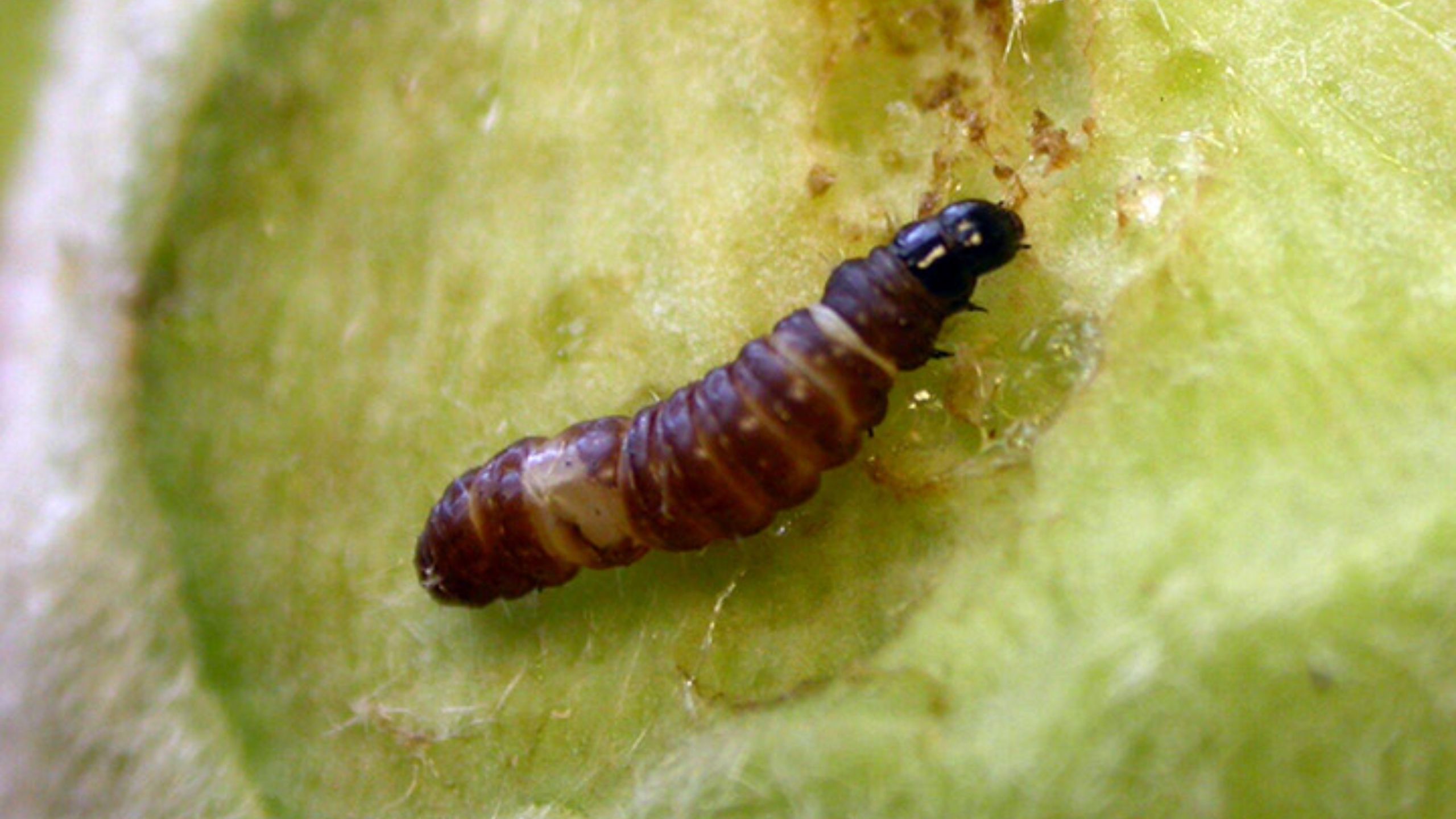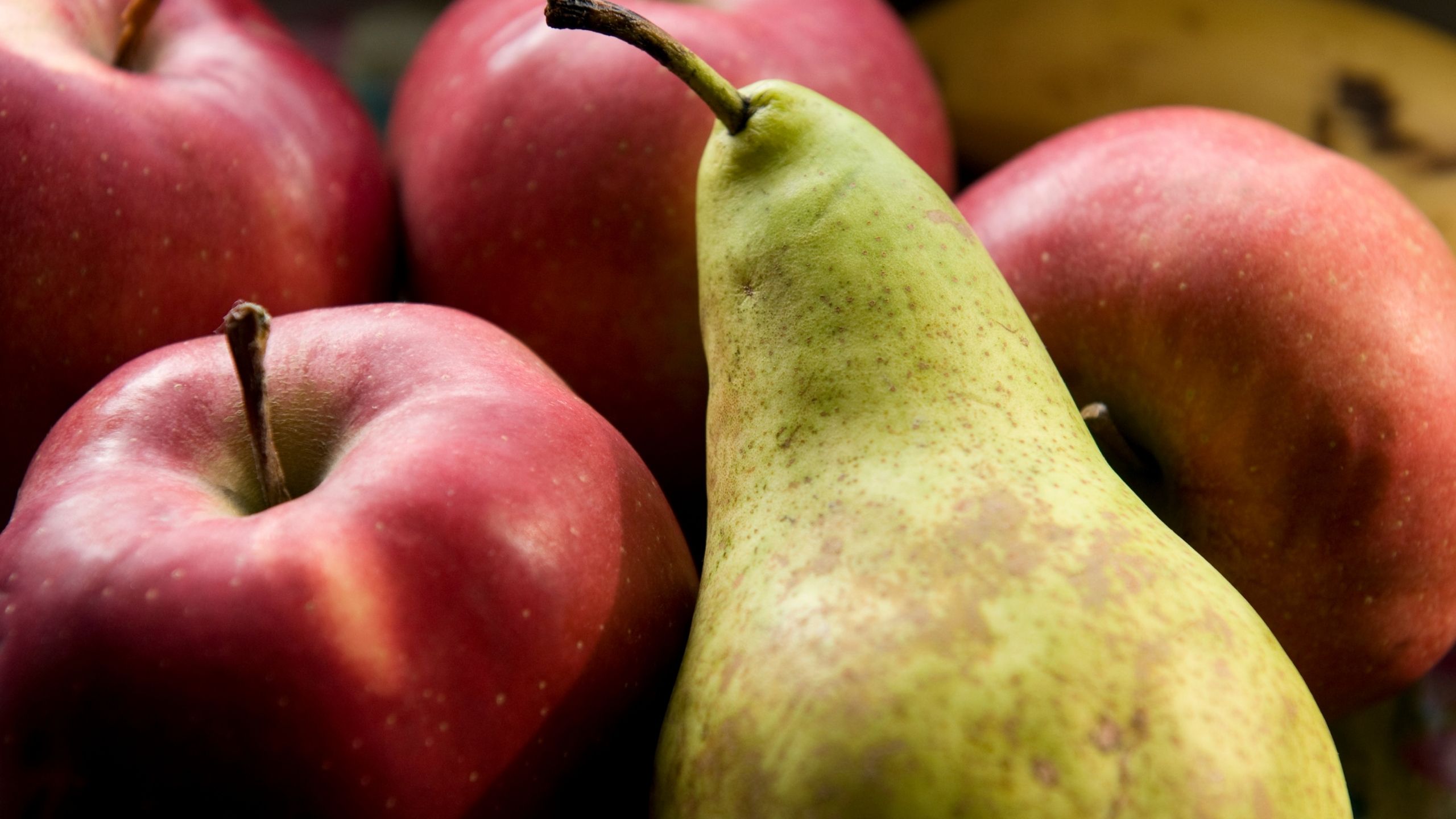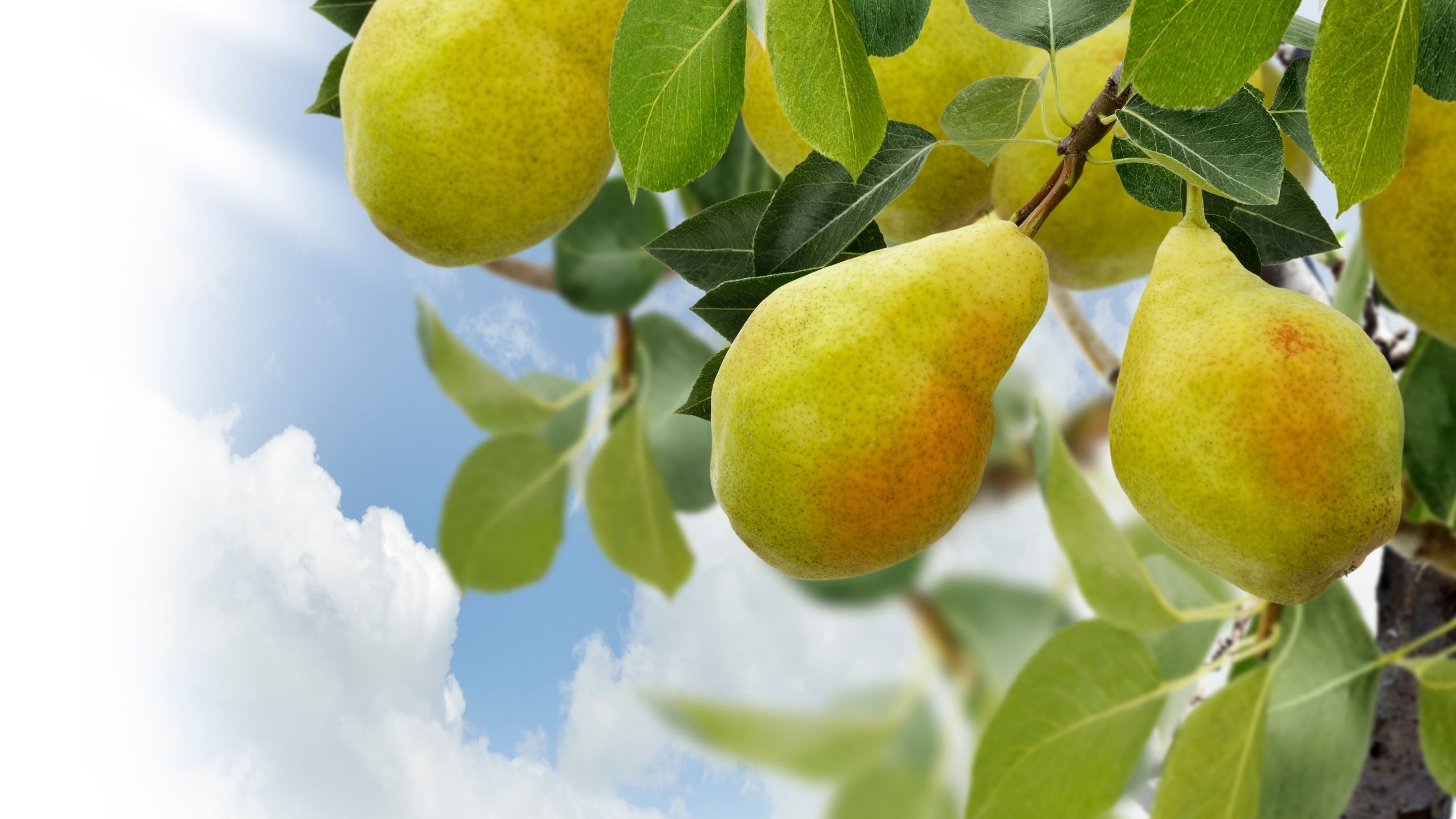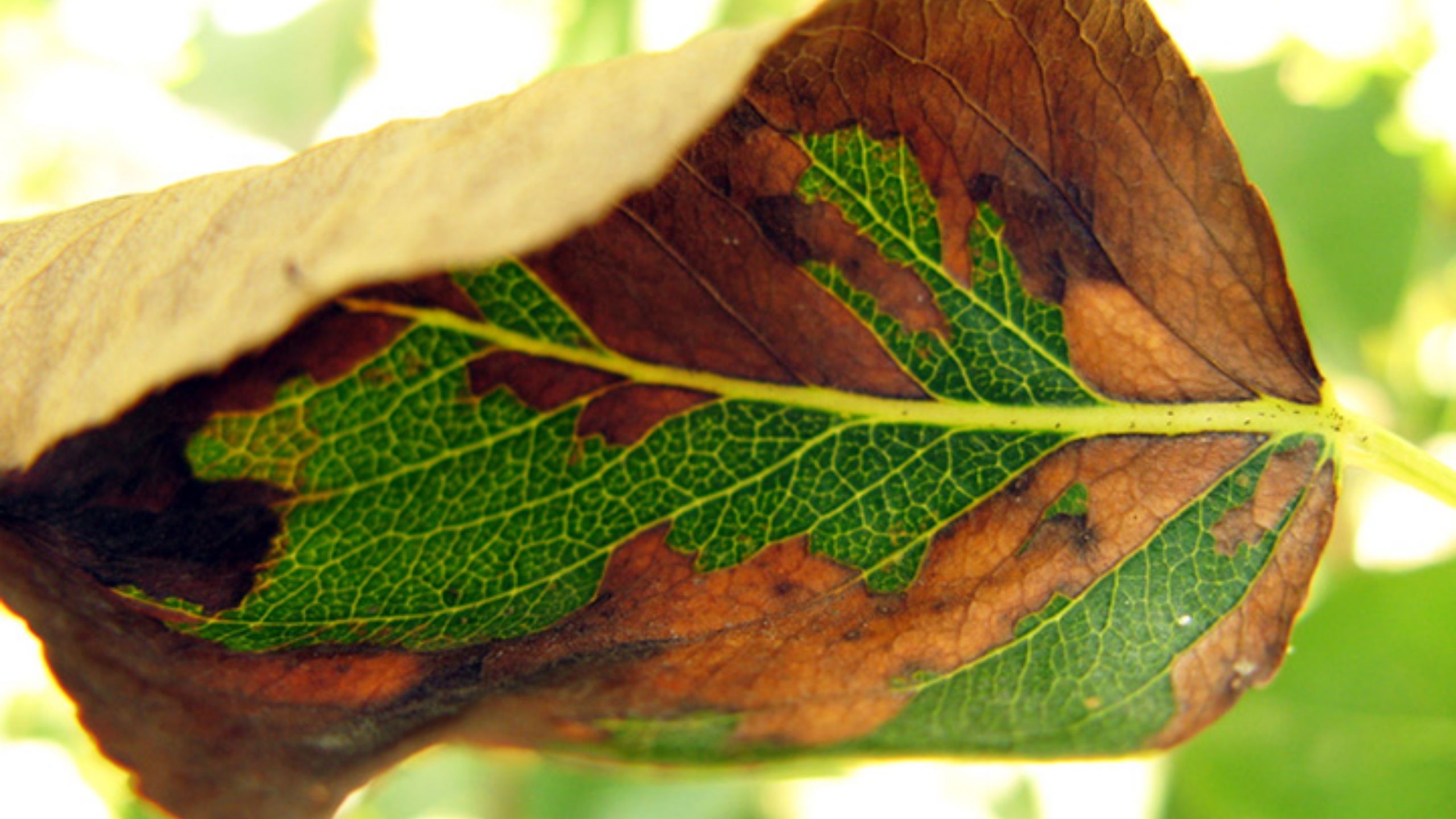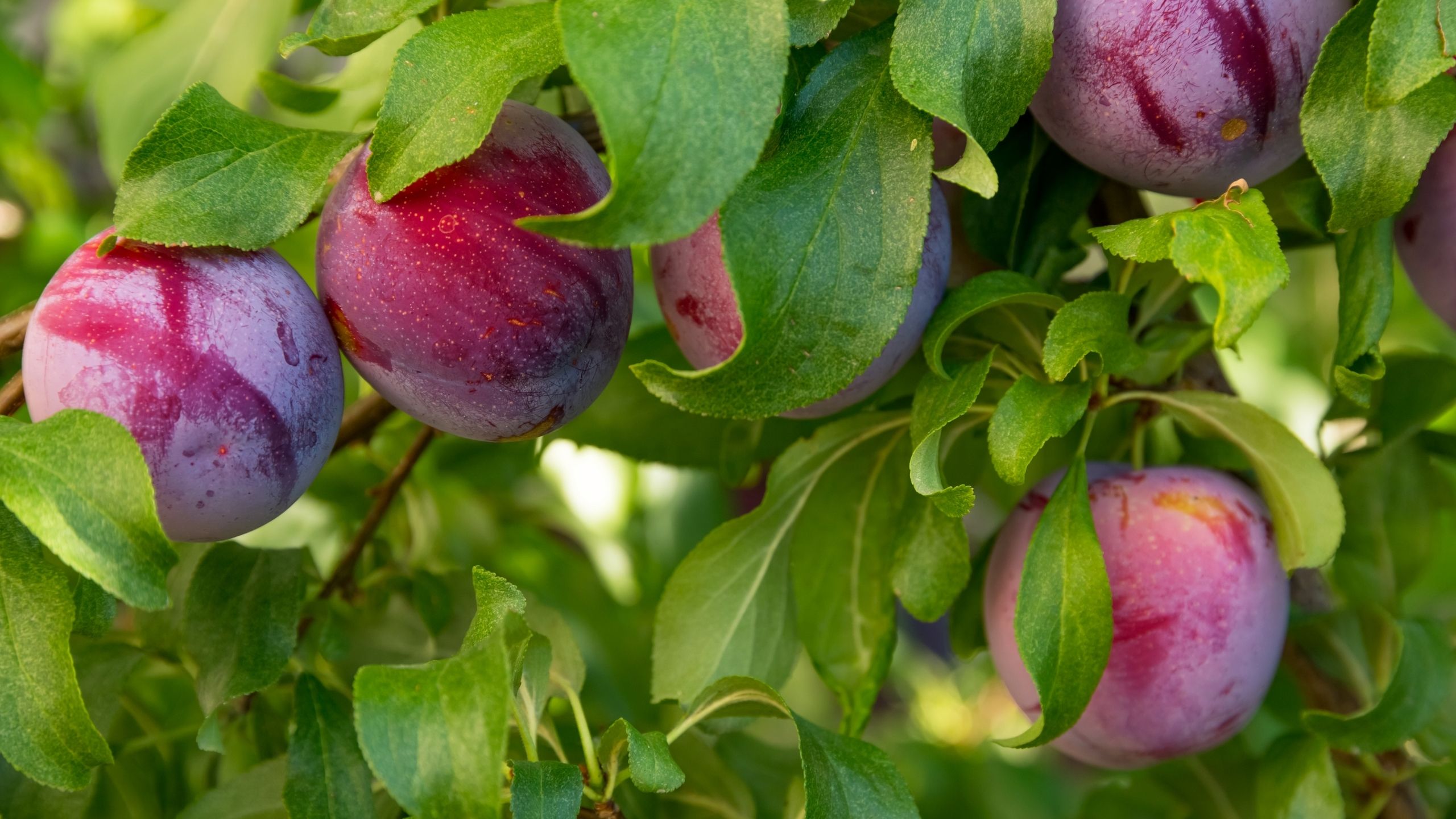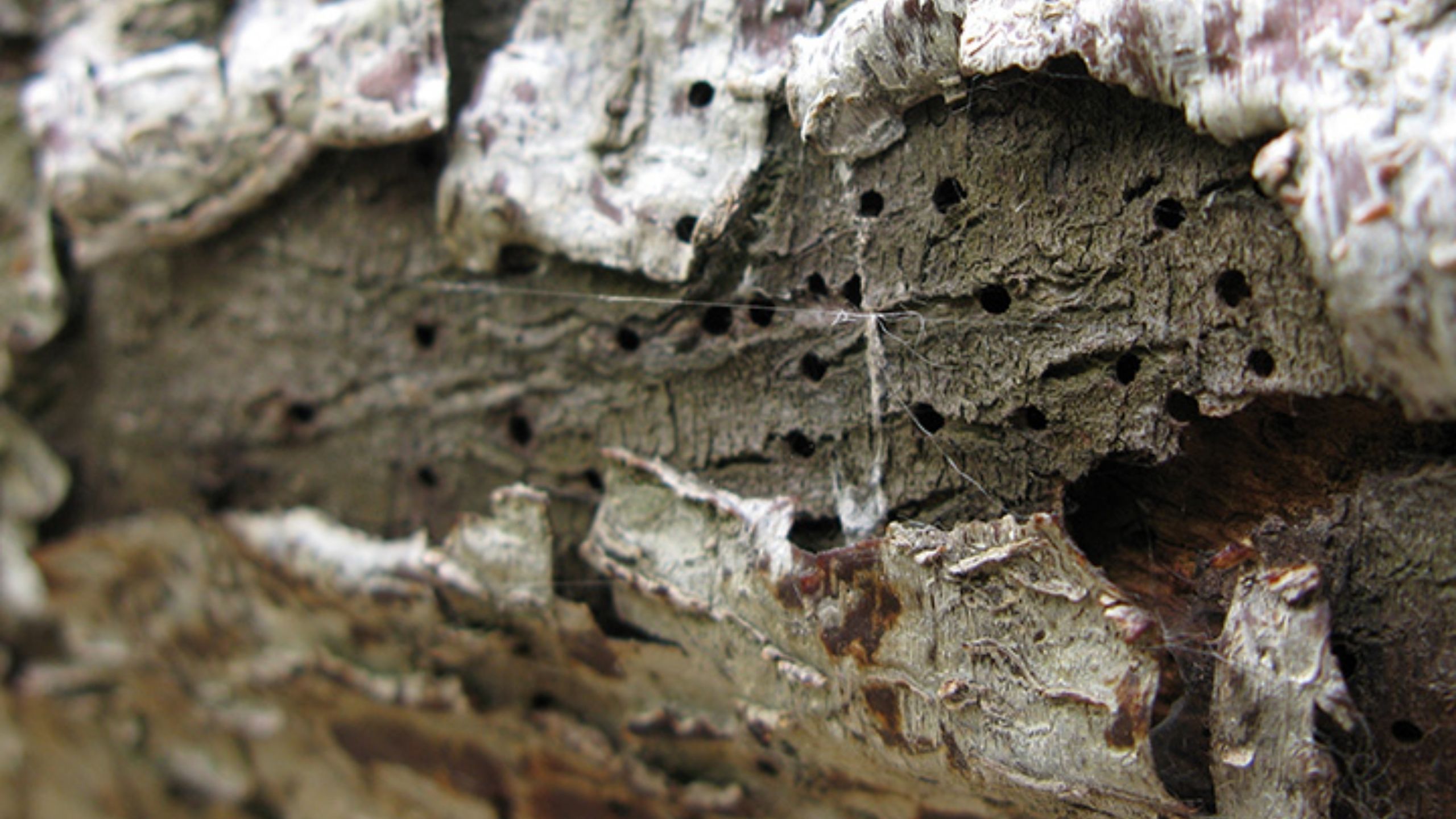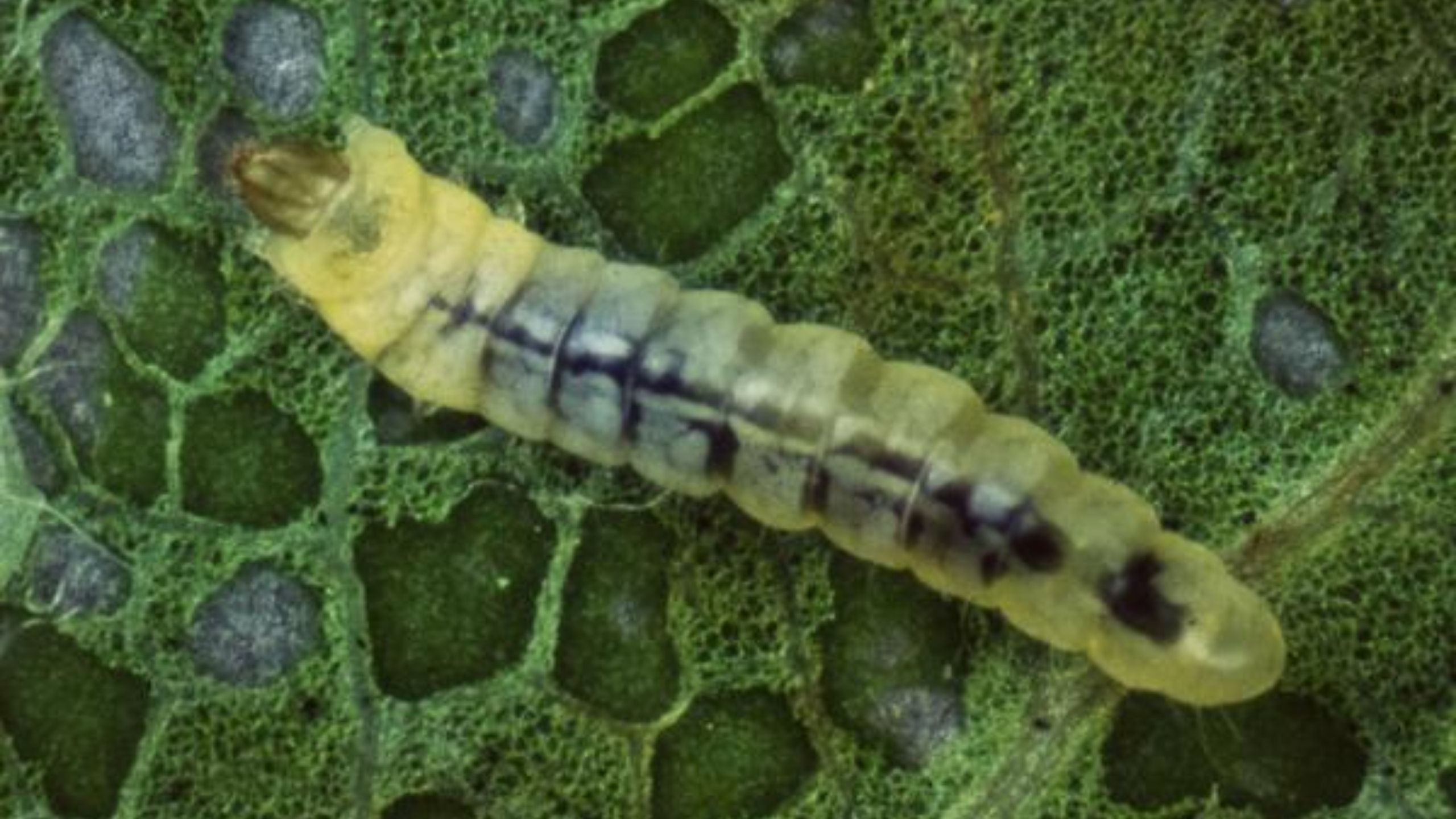Pear Fruit Sawfly
October 2019
Marion Murray, IPM Project Leader • Ryan Davis, Arthropod Diagnostician (No longer at USU)
Do You Know?


don’t emerge as adults until the following spring.
- The common name given to Hoplocampa brevis is pear sawfly. Because another pear sawfly (Caliroa cerasi, also known as pear slug) is common in Utah, we will refer to this species as pear fruit sawfly.
- Pear fruit sawfly is an infrequent pest of pear in Utah, first identified in the state in 2015.
- It causes damage when larvae tunnel through developing pears in spring.
- Injured fruits are deformed and drop prematurely.
- Management is by a single application of an insecticide plus oil, or oil alone, near pear’s prebloom stage.
Pear fruit sawfly (Hoplocampa brevis) has been reported on pears in Virginia, Pennsylvania, Maryland, and Ontario, Canada, and was first identified in Utah in 2015. It is native to parts of Asia. Pear fruit sawfly is different from another pear pest of a similar name that strictly feeds on foliage–pear sawfly, which is also known as pear slug (Caliroa cerasi). Pear fruit sawfly feeds exclusively within pear fruitlets for approximately six weeks from early to mid-spring.
Description And Life Cycle

pear flowers before laying eggs. Image courtesy of Kamil Holy, BioLib.
The pear fruit sawfly adult is a small, fly-like wasp that is reddish-yellow in color. It measures about 3/16-inch long. Most of the adults are female, and they reproduce parthenogenetically (without mating).
Adults start emerging from the soil starting at the pear pre-bloom stage, with a majority of the population emerging over a 5 to 7 day period. During the day, they can be found in the flowers, feeding on pollen and nectar. Eventually, each female lays a single egg within the flower epidermis, toward the center of the calyx, repeating the egg-laying process in up to 40 flowers.
After one to two weeks, each egg hatches into a larva, which then tunnels into the developing pear fruitlet to feed on the flesh and consume the seeds.
The larva is cream to yellowish-grey in color, with a redbrown to dark black head. When mature, it measures 1/3-inch long. During this stage, each larva can enter and exit multiple fruits over a period of 20 to 34 days, passing through five instars. Once fully mature (late May to mid June), the larvae drop to the soil, burrow to a depth of 2 to 7 inches, and form a silky cocoon. The sawflies remain in the soil until the following spring, at which time they pupate and emerge as adults. Approximately 25% of pupae remain in the soil an additional year. There is one generation per year.
Hosts

ooze wet frass at the calyx end.

seeds, and when finished, exits back out the same way.
Pear (Pyrus communis)
Symptoms
Pear fruit sawfly larvae feed exclusively within pear fruitlets. Symptoms of fruits with a larva tunneling inside include:
- deformed and swollen shape
- blemished skin
- round hole located near the calyx, accompanied by black decay and wet frass
- premature fruit drop
To distinguish pear fruit sawfly from codling moth, keep these factors in mind:
- symptoms of pear fruit sawfly will appear weeks before codling moth
- sawfly frass is wetter and darker
- sawfly larvae are smaller, darker in color, and have 7 pairs of prolegs (as opposed to codling moth’s 4)
Orchard or tree injury fluctuates from year to year. The insect population size and amount of damage depends upon the previous year’s damage level, whether adult flight is synchronized with pear bloom, the level of fruit set, and overwintering conditions. In Utah, losses have been minor, but in highly infested orchards in Europe, growers have reported up to 70% loss, primarily on borders. Earlyblooming varieties are more susceptible.
Management


Monitoring
Start monitoring the pear orchard for adult sawflies in March or April at three-day intervals, and continue through bloom. Shake branches over white cardboard or a cloth tray to determine their presence. After fruitlets form, inspect them for holes, oozing, and/or for frass caused by sawfly larval feeding.
Cultural Control
Where applicable, tilling or cultivating the soil in autumn between tree rows can expose the larval cocoons to predators (birds, beetles, and other) and cold winter temperatures.
Although not tested, late-blooming varieties (such as Anjou, Bosc, Comice, Magness, Orient, Seckel) may be less affected.
Insecticide Treatment Decision-Making
No treatment threshold for the presence of adults or amount of fruit damage has been determined. In general, treatments should be implemented based on the previous year’s damage level, the current crop load, and the presence of adults at flowers (based on monitoring).
If the crop load is high, anecdotal evidence suggests that damage from pear sawfly will be “absorbed” by crop thinning, and therefore, intervention may not be necessary. If the crop load is light, the injury could cause a greater negative impact.
Conventional Insecticides
If a treatment is necessary, the target stage using an insecticide is the adult, and there are two treatment windows: pre-bloom (also known as delayed-dormant) and petal fall.
In Utah, there are no products specifically labeled for this pest, but typical delayed-dormant or petal-fall products for other pests have been shown to be effective in Canada, in the Province of Ontario.
Utah pear growers have found success with a single delayed-dormant treatment. They reported that the use of horticultural oil (2% rate) mixed with a broad-spectrum insecticide (such as carbaryl, a pyrethroid, or diazinon) labeled for pear, reduced losses by about 90%.
Organic Options
For organic control, use oil alone at the delayed-dormant stage.
Alternatively (or in addition), the use of beneficial nematodes may be used to target larvae in the soil. Research in Italy found that applying a mix of Heterorhabditis bacteriophora and Steinernema carpocapsae to the soil just before the larvae drop from the fruits to the ground (late May to early June) resulted in zero adult sawfly emergence the following year, as compared to 20 adults in the untreated control.
Nematodes require consistent soil moisture at application and for several months afterward, so this practice may not be effective or practical in Utah.
References And Resources
- Edisonovich, Davidyan Genrik (All Russian Institute of Plant Protection). 2008. Hoplocampa brevis. In A.N. Afonin, S. L. Greene, N. I. Dzyubenko, A. N. Frolov (eds.). 2008. Interactive Agricultural Ecological Atlas of Russia and Neighboring Countries. Economic Plants and their Diseases, Pests and Weeds [Online].
- G. Curto, S. Vergnani and A. Reggianai. 2006. Effectiveness of entomopathogenic nematodes in the control of sawfly, Hoplocampa brevis (Klug), on pear orchards. Summit Workshop COST 850 “Biocontrol Symbiosis”.
- G. G. Dustin. 1966. Occurrence in Ontario of the Pear Fruit Sawfly, Hoplocampa brevis (Klug). The Canadian Entomologist. 98:267
- Gerson, Uri, and Shalom Applebaum, eds. 2014. Plant Pests of the Middle East: Hoplocampa brevis. The Robert H. Smith Faculty of Agriculture, Food and Environment, The Hebrew University of Jerusalem. Ontario Crop IPM. Pear Sawfly. Ontario Ministry of Agriculture, Food & Rural Affairs.


